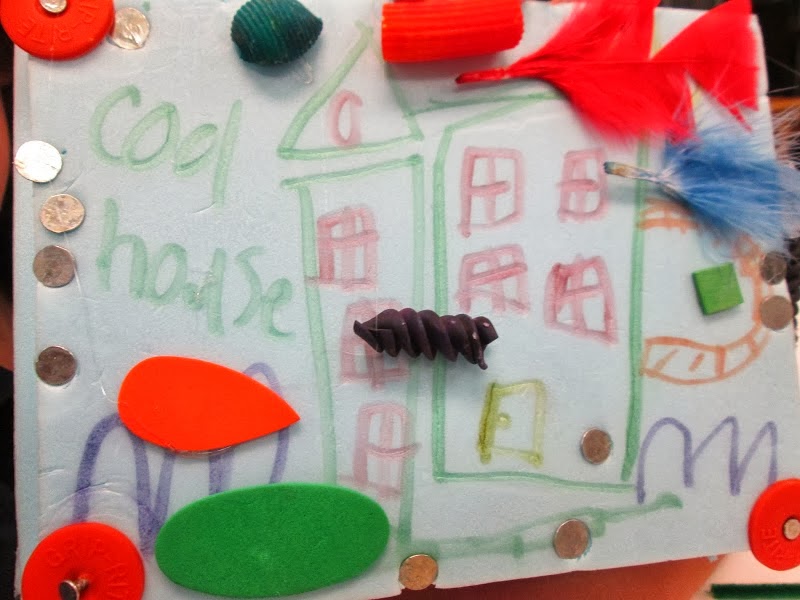Holiday Circuits
Materials each child received: a battery, led light,
copper tape, Popsicle stick

In the FabLab we had been exploring the use of craft sticks, a material that both the children and the teachers feel comfortable with as the base for many arts and crafts activities, as a base for circuits. Using our Epilog Laser cutter we designed a simple circuit template, that could be created by the children, and was open enough so that they could easily incorporate basic electronics into their crafts.
For the annual holiday show each teacher decided on
a prop for the children in the class to wear. In an effort to provide a festive
look, the children made a circuit with a specific LED light to represent their
class. The light was placed behind the prop allowing only the switch to show. For
this activity the classroom lead teacher and assistant joined the Play Make
Share staff. Each teacher sat with a small group of 4-5 children.
The children were previously introduced to a squishy circuit activity in August and were able to remember the names to the materials with an exception to the copper tape. Details as in the LED lights having a long leg/ short leg, battery having a positive side/ negative side were recalled by the children in every group. After discussing the materials and their purpose in a large group, the children’s attention was drawn to the teacher at their table.
The children were encouraged to place the light and battery on the Popsicle stick. Once all of the children at the table had finished, the teacher would show the position of each item modeling and giving the children sufficient time to rearrange their light or battery. One of the challenges the children face is connecting the battery to the LED light on the popsicle stick without it constantly falling off. To ease this challenge and lower the barrier a little, we designed a popsicle stick template that allowed the battery and LED light to be press-fit, thus ensuring they would stay in place. The next step would be to connect the LED to the battery using copper tape. Separating the back of the copper tape and placing it correctly proved to be challenging for the children. It took quite a bit of patience on their part but they all managed to find assistance among each other. Once more the teachers at the table modeled where to place the copper tape. Finally the last step consisted of enjoying the lights turn on and off. The holiday circuits were placed behind the props in their own classroom.













































